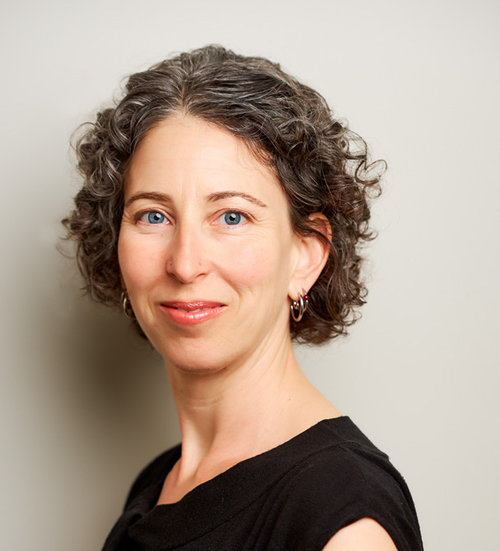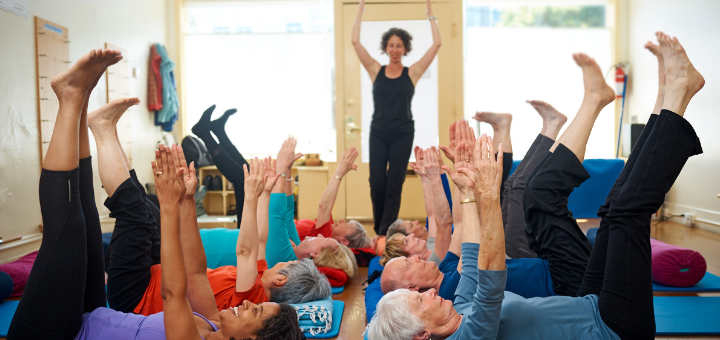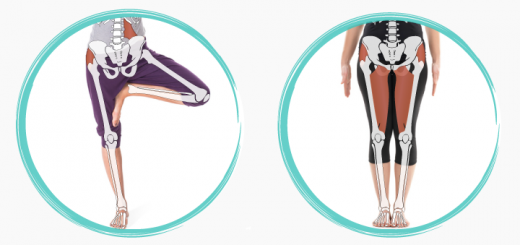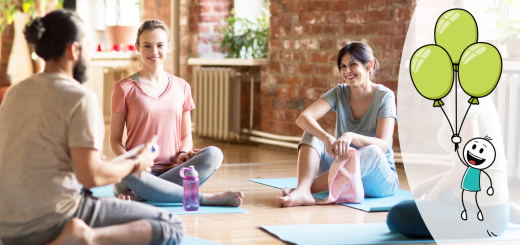Unlock Your Teaching Superpowers with Yoga Research
7
by Rachel Lanzerotti, yoga teacher and yoga therapist
Have you heard? Twists help with digestion. Static side plank (Vasisthasana) improves scoliosis. “Yoga is good for…” and before we say this, do we pause to confirm what we know, or don’t know? How do we know which claims about yoga’s health benefits are true?
As yoga teachers and therapists, we’re positioned to transmit ignorance (avidya) or understanding (vidya) to our students and clients. How do we know what we know? Even more, how do you have confidence in what you teach your students? When you hear about new yoga research study, how do you assess its value for how and what you teach?
Before I started teaching yoga and eventually became an IAYT-Certified Yoga Therapist, my profession involved research. With a background in human biology, community health education, and social work, I ran a consulting practice as a program evaluator for nonprofit, community groups. I designed and implemented basic research, using a variety of methods to gather, synthesize, and report information for organizations to see if they were meeting their missions.
Starting in 2009, I taught and designed yoga protocols for six studies at the University of California San Francisco (UCSF), a research, teaching, and patient care center. The research includes: a multi-year study to compare the benefits of stretching and restorative yoga for metabolic syndrome; research on mindful breathing in post-menopausal, hypertensive women; two consecutive studies of viniyoga for chronic low back pain; and two complex studies on integrative approaches, looking at multiple forms of yoga practice, for cancer survivorship.

As yogis, we have a teaching superpower: We can access a mighty, interdisciplinary blend of experiential learning, lineage transmission, yoga theory and philosophy, and what’s known as “evidence-based practice.” Evidence-based practice means that current, valid research results guide decisions about what we do. What we teach is informed by scientific evidence, at the spot where the methods of yoga meet those of western medicine.
Understanding yoga research can give us a common language with medicine, mental health, and other practitioners. When we learn how to translate and demystify scientific research and medicine, we increase our fluency as practitioners and yoga educators.
We also gain more precise information to teach our students. Understanding yoga research matters so we can discern solid information from hype; practices worth sharing from those that don’t measure up.
For example, I used to pass on to my students what I’d heard from my teachers— and it seemed to make intuitive sense— that restorative yoga lowers cortisol (stress hormone) levels. And then, I worked on the three-year, randomized trial of restorative yoga that looked at this question among others. When all the data were in and numbers crunched and two separate articles written… the study found other physiological benefits of restorative yoga, but not significantly lower cortisol levels. The overall findings still offer good news for practitioners and teachers of restorative yoga. And raise great questions for further research, too.
Today, I might say something like this to curious students: Medical research continues to look at the mechanisms behind what yogis know experientially— that restorative yoga helps stress levels. Studies to date find that combining restorative yoga with moderate activity like “stretching,” is helpful for metabolic health.
If they are really interested, I might add: The research looked at glucose levels, insulin levels, weight, waist circumference, cholesterol, triglycerides, as well as quality of life. The study concluded that both restorative yoga and stretching can promote healthy lifestyle change in people at risk for type 2 diabetes. The only significant difference between the two groups (yoga and stretching) at the end of the study was that the fasting glucose level had improved more in the yoga group than in the stretching group.
When we see claims of NEW! study results or “BEST” yoga practices, one smart first step may be to go back to the source. Click through to the original journal article. Or search on PubMed for the abstract (summary of the article and its findings) and if you’re lucky you may be able to access the full text. For background, you can search for related terms (e.g., “restorative yoga” and “cortisol.” Also, the International Association of Yoga Therapists (IAYT), the professional and credentialing group for yoga therapists, includes a treasure trove of articles in its online resource library on yoga therapy.
Even once we have that scientific journal article in front of us, it can be daunting to figure out what’s reliable and useful. As Einstein (or WB Cameron, depends on your source) said: Not everything that counts can be counted, and not everything that can be counted counts.
How do we figure out whether we can rely on and use yoga research for our practice and teaching? We will explore it next week: Tune in!
(© 2019 Rachel Lanzerotti, Five Rivers Yoga LLC. Thank you to Dr. Alka Kanaya.)
[jetpack_subscription_form]
About Rachel
Rachel Lanzerotti (MSW, eRYT500, IAYT-Certified Yoga Therapist) is the Founder of Five Rivers Yoga Therapy and creator of The RE/ST Method for Pain Recovery™. She is a Body-Mind Yoga Therapist, meditation teacher, counselor, health educator and specialist in back pain relief.

Rachel has taught at UCSF Osher Center for Integrative Medicine and Spirit Rock Meditation Center, and was a featured presenter on “The Modern Science of Yoga” at the SF Asian Art Museum. She also launched the Aging Well program of San Francisco Village. She is a faculty member of Essential Yoga Therapy, where she mentors and teaches yoga teachers and therapists-in-training.
Rachel has been published in numerous journals, research studies, and periodicals including Stanford Magazine, and with the Boston Women’s Health Book Collective on topics ranging from yoga, health, aging, and sexuality to gender, racial justice, and human rights.
She holds a BA in Human Biology from Stanford University and Master of Social Work (MSW) from San Francisco State University. For a decade prior to founding Five Rivers Yoga Therapy, Rachel ran an organizational consulting practice with community-based groups. She spent many years focused on direct action work for nonprofit and social change organizations.




















Great article. I SO agree with your insight into this dilemma. Your wording/explanation imparted to your students was on point!
Thank you, Laura! I appreciate your comment.
EXCELLENT article! Every time I read an article that promotes Yoga for ______ (fill in the blank) I wonder where the data is that backs that up. I can’t in good conscience teach/claim something to my students that either A) I have not experienced B) observed in my students or C) have scientific data to back it up. And in each of those scenarios, I am completely honest in my assessment and how I pass it on. Thank you for articulating all of this so well!
Hi Nancy, thanks for your kind words about my article. it’s great to hear that we’re in good company in seeking to teach with integrity. 🙂 Rachel
Many thanks for this article Rachel. The importance of an evidence based approach is sinking in deeper and I dive further into my teaching practice. Are there any specific journals you would recommend that publish yoga related studies, or is it a matter of connecting the dots and choosing an area of the body/system to research and attaching yoga to the search? Cheers 🙂
Hi Hollie, Thank you for your comment! Rachel is on a silent retreat right now – I am sure she will be happy to respond once she gets back!
Hi Hollie, thanks for your patience in awaiting my reply. I’m back from silent retreat and considering your question…. I typically do a searching using pubmed (online) with on a particular condition or system (as you suggested), search terms “headache and yoga.” However, you could take a look at the journals of the IAYT, including Yoga Therapy Today and the International Journal of Yoga Therapy (visit IAYT.org). I’d be curious to hear your thoughts on my other posts on this topic for Sequence Wiz, which Olga has published over the past few weeks. Best wishes!